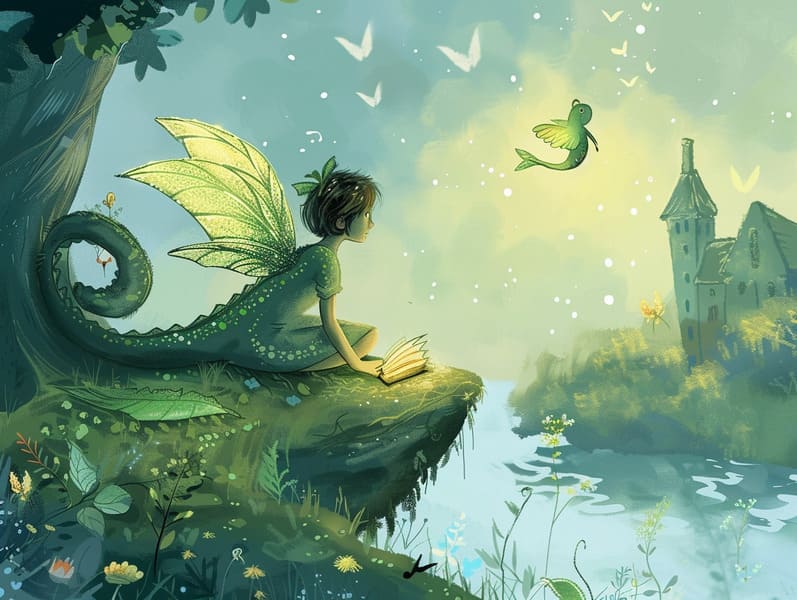The Emergence of Short Fairy Tales and the Undying Splendor.
The Emergence of Short Fairy Tales and the Undying Splendor.
Blog Article

Legendary fairy tales have ancient roots. These tales have been transmitted from one generation to the next millennia before they were ever documented. They came from a variety of traditions, including Indigenous traditions. They were initially transmitted among mature audiences, often carrying themes and messages pertaining to the societal norms and beliefs of the time.
Jacob and Wilhelm Grimm, Jacob and Wilhelm (the Grimm brothers), were among the first to collect and release many of these beloved narratives. Their compilation, "Grimm's Fairy Tales," included narratives like "Cinder Maid," "Hansel and Grethel," and "Snow-White and Rose-Red," which have since become pillars in the world of traditional fairy tales. Similarly, Hans Christian Andersen's enchanting narratives, such as "The Story of the Little Mermaid," and "The Duckling that Could," have gained the love worldwide, guaranteeing their place in the pantheon of famous fairy tales.
Despite their age, fairy tales remain as pertinent as ever, especially as kids' bedtime tales. These magical stories are now available in numerous formats, including vibrantly illustrated books, fantastical animations, and web-based fairy tales.
Their lasting presence can be credited to several whimsical characteristics:
Significant Morals: Traditional fairy tales often teach important moral lessons. Tales like "The Story of the Boy Who Cried Wolf" teach the significance of being truthful, while "The Tale of the Tortoise and the Hare" stress the values of tenacity and unpretentiousness. These narratives offer kids clear distinctions between right and wrong, building their moral compass in a mild yet deep way.
Kindness and Comprehension: Old fairy tales frequently portray figures facing struggles and tests, fostering audiences to comprehend with their struggles and rally behind their triumphs. For instance, "Beauty and the Beast" highlights the value of looking deeper to realize the inner spirit of a soul, fostering kindness and knowledge.
Cultural Awareness: Many fairy tales are interwoven with the cultural contexts from which they were born. Immersing in these stories can provide intriguing perspectives into different heritages, cultivating a sense of global insight and understanding.
Imagination and Creativity: The supernatural elements in traditional fairy tales—talking beasts—fuel children’s visions and dreams. These fairy tales carry readers to fantastical realms, unleashing creative dreams and a sense of enchantment that stays a lifetime.
Traditional fairy tales are not only alluring but also informative. They provide fascinating tools in advancing various mental and emotional abilities in little ones. When timeless fairy tales are read aloud, they advance language skills by offering new linguistic elements and sophisticated sentence structures. This practice also promotes listening skills and focus, as children focus on every detail, looking forward to see what happens next.
Furthermore, exploring the themes and characters of old fairy tales can strengthen thought processes and cognitive skills. The young are educated to recognize patterns, guess what will happen, and know cause and effect. These reflections also further young ones convey their thoughts and feelings, strengthening their emotional intelligence.
In today’s online age, the existence of online fairy tales has made these narratives more reachable than ever. Web platforms and mobile apps offer extensive collections of old fairy tales that can be looked at or listened via anytime, anywhere. Fairy tales recited are particularly in demand, sharing an fascinating method for kids to be a part of these bewitching tales. Audio stories and read-out-loud videos move characters and settings to life, often joined by magical soundtracks and songs that boost the narrative experience.
The timeless allure of traditional fairy tales lies in their ability to read more evolve to new eras while preserving their underlying messages. Contemporary updates of these stories often show more multicultural characters and modern settings, making them accessible to today’s audience. However, the basic principles of spirit, charity, and rightness remain unchanged, continuing to appeal to children of all ages.
Ancient fairy tales also offer a sense of solace and knownness. They deliver up a structured narrative with a evident beginning, middle, and end, often ending with the resolution of conflicts and the triumph of goodness over badness. This assuredness can be heartening for young readers, gifting a sense of security in an inconstant world.
Timeless fairy tales continue to enthrall and educate new generations, maintaining their delight and significance in modern society. As nighttime stories for kids, they extend a perfect blend of delight and instruction, cultivating moral values, empathy, and creativity. The availability of online fairy tales and the popularity of fairy tales spoken promise that these timeless tales remain obtainable to new generations.
By maintaining and telling these fairy tales, we continue to cherish the rich tapestry of tradition and cultural heritage. Whether you are enjoying a vibrantly illustrated book, seeing a electronic collection, or listening to an spoken story, the delight of timeless fairy tales is always within reach. These stories teach us of the ageless effect of tales and its ability to bind us across eras and regions.
If you are perusing a vibrantly illustrated book, perusing a internet library, or listening to an audiobook, the grandeur of timeless fairy tales is always within reach.
These stories point out of the endless spell of narratives and its ability to draw us together across eras and regions, making a tie that fascinates and enlightens alike.